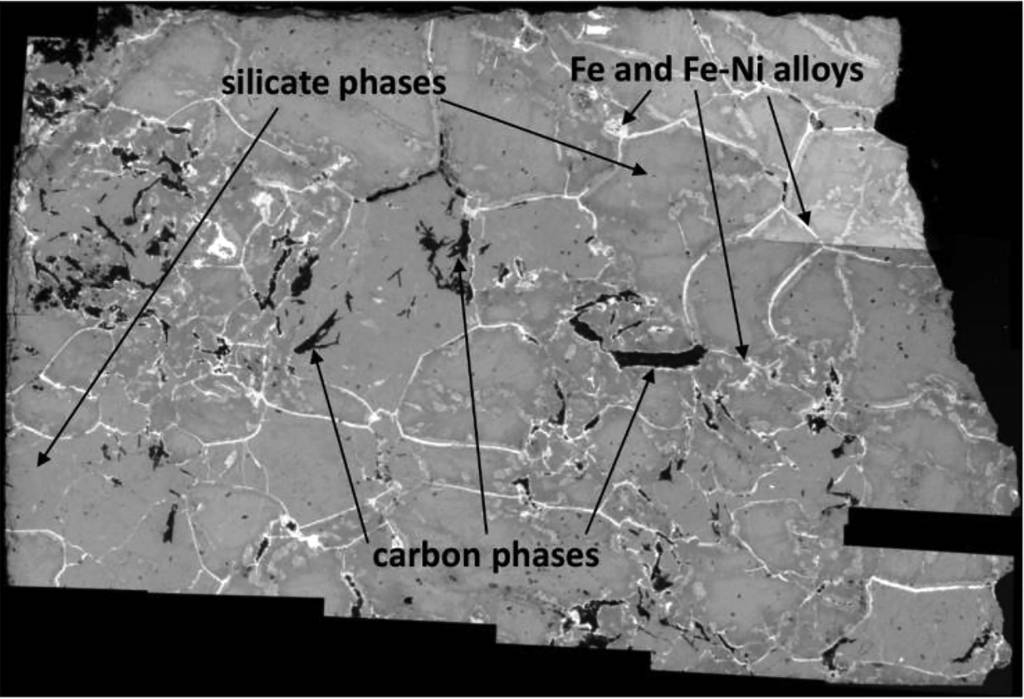Impact diamonds in ureilites by catalytic growth involving Fe-Ni-silicide: The example of Kenna meteorite

The occurrence of shock-induced diamonds in ureilite meteorites is common and is used to constrain the history of the ureilite parent bodies. In their new paper Anna Barbaro and co-authors investigated a fragment of the Kenna ureilite by micro-X-ray diffraction, micro-Raman spectroscopy and scanning electron microscopy to characterize its carbon phases. In addition to olivine and pigeonite, within the carbon-bearing areas, we identified microdiamonds (up to about 10 μm in size), nanographite and magnetite.
The shock features observed in the silicate minerals and the presence of microdiamonds and nanographite indicate that Kenna underwent a relatively long shock event duration (in the order of 4–5 s) supported by the catalytic effect of Fe-Ni alloys known to favour the crystallization of diamonds with a peak pressure of at least 15 GPa. The presence of nanocrystalline carletonmooreite provides further evidence to support the hypothesis of the catalytic involvement of Fe-Ni bearing phases into the growth process of diamond from graphite during shock events in the ureilite parent body, enabling the formation of micrometer-sized diamond crystals.
